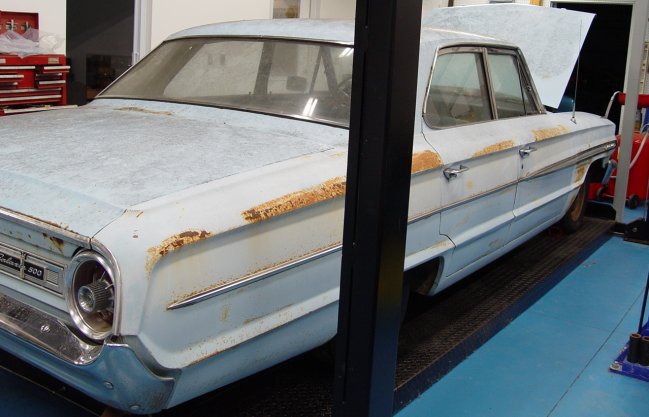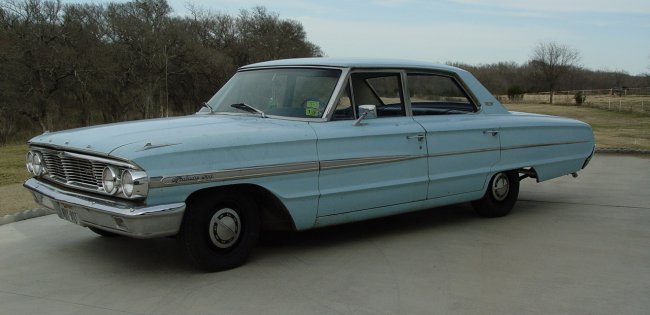on Facebook
"Full Inventory"
(Projects, Completions and Personal Collection)

77 Lancia Scorpion

67 Camaro RS Conv.
68 Austin Healey Sprite

68 Cougar

69 Corvette

70 Opel GT

69 Marcos 3000GT

86 TVR 280i

73 TVR 2500M

90 Buick Reatta

| Home | Current Inventory | Projects | Services | Company | Stuff | Bob's Car Collection | Contact Us |
|
on Facebook |
"Full Inventory" (Projects, Completions and Personal Collection) |
 77 Lancia Scorpion |
 67 Camaro RS Conv. |
|
68 Austin Healey Sprite |
 68 Cougar |
 69 Corvette |
 70 Opel GT |
 69 Marcos 3000GT |
 86 TVR 280i |
 73 TVR 2500M |
 90 Buick Reatta |
Return to Service Projects | ||
 |
||
It's well known that one of the worst things anyone can do to a car is to let it sit idle for extended periods. One of our missions here at Midlife Classics is to bring back classic cars that have been stored - or just neglected - for years at a time.
In aviation, whenever an aircraft is serviced or repaired, the mechanic performing the work is required to document everything that has been done in the aircraft's logbook. At the end of each entry, the FAA requires that the statement "Returned to service" accompanies the mechanics identification and signature. Thus, we refer to our efforts to "resurrect" inactive classic autos as "Return to Service" projects.
|
||
These projects focus on inspecting the vehicle for the classic issues that befall cars left inactive for years and then performing the mechanical repairs and rebuilding the systems required to make them safe and reliable so that they can not only pass the required state safety inspection, but can be relied upon to safely operate on public roads.
Normally, cosmetic restoration is not included as part of a Return to Service project. But, some of these project vehicles have returned for additional work - from upgrades and minor refurbishing, to complete restoration.
|
||
Midlife Classics is a Restoration shop. We are not a repair shop. As such, our minimum level of service for a vehicle we see for the first time is our Return to Service project. Once we've established a baseline with a fully roadworthy vehicle, we will gladly perform repairs, and provide ongoing service. If we're asked to perform a restoration, the Return to Service project is, of course, treated as part of the project.
|
||
In our view, one of the things that distinguish a restoration business from repair shop is the level of detail that goes into even minor repairs. So, while a Return to Service project typically doesn t involve cosmetic restoration, our standard methodology dictates that pretty much every part that is removed is cleaned, stripped (via media blasting or other means) and then refinished to a like-new finish before being reinstalled. This is why some of our Return to Service projects leave here looking like they ve had the engine bay detailed.
|
||
A typical return to service project begins with a thorough inspection and evaluation. In most cases, the fuel system will need to be drained, flushed and inspected for damage caused by stale fuel. Cooling Systems are drained, flushed and in most cases the hoses are replaced. If the engine hasn t been run in a long time, we follow the appropriate steps to prepare it for its first start-up. Brake systems are flushed at a minimum, but usually we play it safe and rebuild the hydraulic components to ensure that all the rubber components are fresh. The steering and suspension systems are also inspected for wear and age-related damage to the rubber bushings and seals.
|
||
Costs vary from one project to another and depend greatly upon the precautions taken (or not taken) when putting the vehicle into storage and the length of time it has been left idle. If you are planning to put a car into long-term storage, talk with us about some things that can be done to minimize the potential damage and eventual costs of putting it back on the road.
|
||
 |
||
Click HERE for a PDF copy of the Return To Service Program Sheet.
|
| |
| Send Mail to |
| bob@midlifeclassics.com |
| |